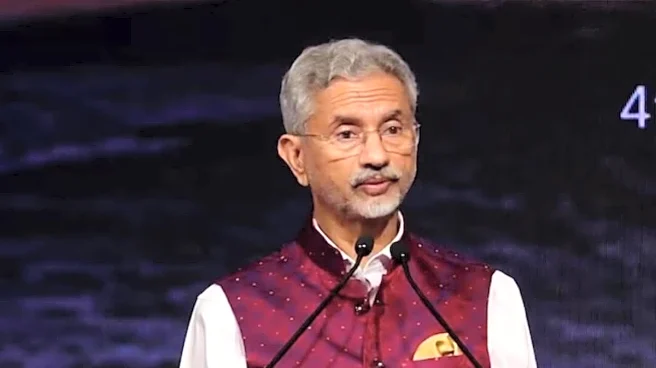India’s GDP Growth: World Bank has revised India’s GDP growth forecast upward to 6.5 per cent for FY26 from its earlier projection of 6.3 per cent, citing resilient domestic demand, strong rural recovery
and the positive impact of GST 2.0. India is expected to remain the world’s fastest-growing major economy due to strong domestic consumption growth, as highlighted by the World Bank in its South Asia Development Update.
However, the World Bank cautions that the next year’s growth could witness a hit due to Trump’s tariffs on exports.
“Domestic conditions, particularly agricultural output and rural wage growth, have been better than expected. The government’s reforms to the Goods and Services Tax (GST)—reducing the number of tax brackets and simplifying compliance—are expected to support activity,” said the World Bank.
The World Bank has lowered India’s FY27 growth forecast to 6.3 percent from 6.5 percent earlier, warning that higher U.S. tariffs could weigh on the country’s exports.
“India was initially expected to face lower U.S. tariffs than its competitors in April, but by the end of August, it was subject to significantly higher duties,” the report said. “Almost one-fifth of India’s goods exports went to the United States in 2024, equivalent to about 2 percent of GDP.”
India’s Gross GDP Grows Exceptionally
India’s gross domestic product (GDP) grew at 7.8 per cent in the first quarter ended June 30, 2025, which was stronger-than-expected. The number has surpassed all GDP expectations as most analysts had pegged the Q1 FY26 GDP growth at 6.5-7%.
The Indian economy had grown at 6.5% in the year-ago quarter, and at 7.4% in the previous quarter (Q1 FY26).
“Real GDP has been estimated to grow by 7.8% in Q1 of FY 2025-26 over the growth rate of 6.5% during Q1 of FY 2024-25,” the Ministry of Statistics & Programme Implementation said in a statement.
Real GDP, or GDP at constant prices, in Q1 of FY 2025-26 is estimated at Rs 47.89 lakh crore, against Rs 44.42 lakh crore in Q1 of FY 2024-25.
Nominal GDP, which factors in inflation, has witnessed a growth rate of 8.8% in Q1 of FY 2025-26.
GST 2.0 Reforms & Trump Tariffs
In a sweeping reform, the GST Council, led by Finance Minister Nirmala Sitharaman, made a sharp overhaul of the Goods and Services Tax (GST) structure. Effective September 22, the system has simplified into just two main slabs of 5% and 18%, replacing the current 12% and 28% rates, with a special 40% slab for luxury and sin goods. Billed as a “historic Diwali gift” for citizens and businesses, the reforms aim to lower the cost of living, boost consumption, and spur economic activity.
Household products like hair oil, shampoo, toothpaste, toilet soaps, shaving cream and toothbrushes will now attract just 5% GST instead of 18%. Rates on butter, ghee, cheese, packaged namkeens, dairy spreads and utensils have been cut from 12% to 5%. Feeding bottles, clinical diapers and sewing machines too move into the lowest slab.
The United States’ 50 per cent tariff measure on Indian goods has officially taken effect from August 27. This includes a second 25 per cent duty added to the earlier 25 per cent hike notified earlier this month. The US Department of Homeland Security has confirmed that the higher rate will apply to any Indian goods “entered for consumption or withdrawn from warehouse for consumption” on or after this time.
The move is the culmination of US President Donald Trump’s ongoing tariff campaign targeting countries that maintain economic ties with Russia, with India being a key buyer of Russian crude. The hike has drawn strong condemnation from New Delhi, while Moscow has backed India’s right to choose its own trade partners.




/images/ppid_a911dc6a-image-175968522303929640.webp)







/images/ppid_a911dc6a-image-175974332877013531.webp)
